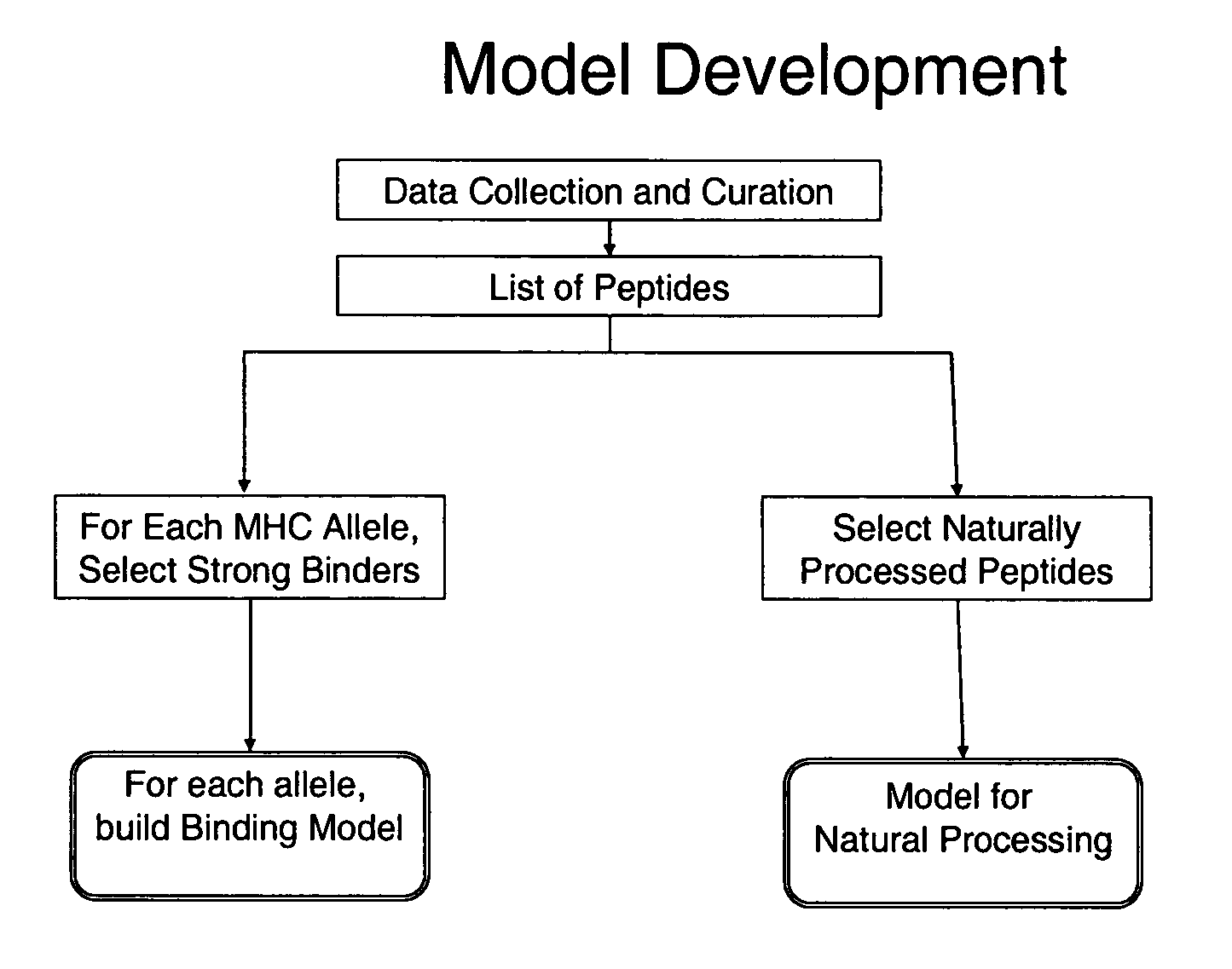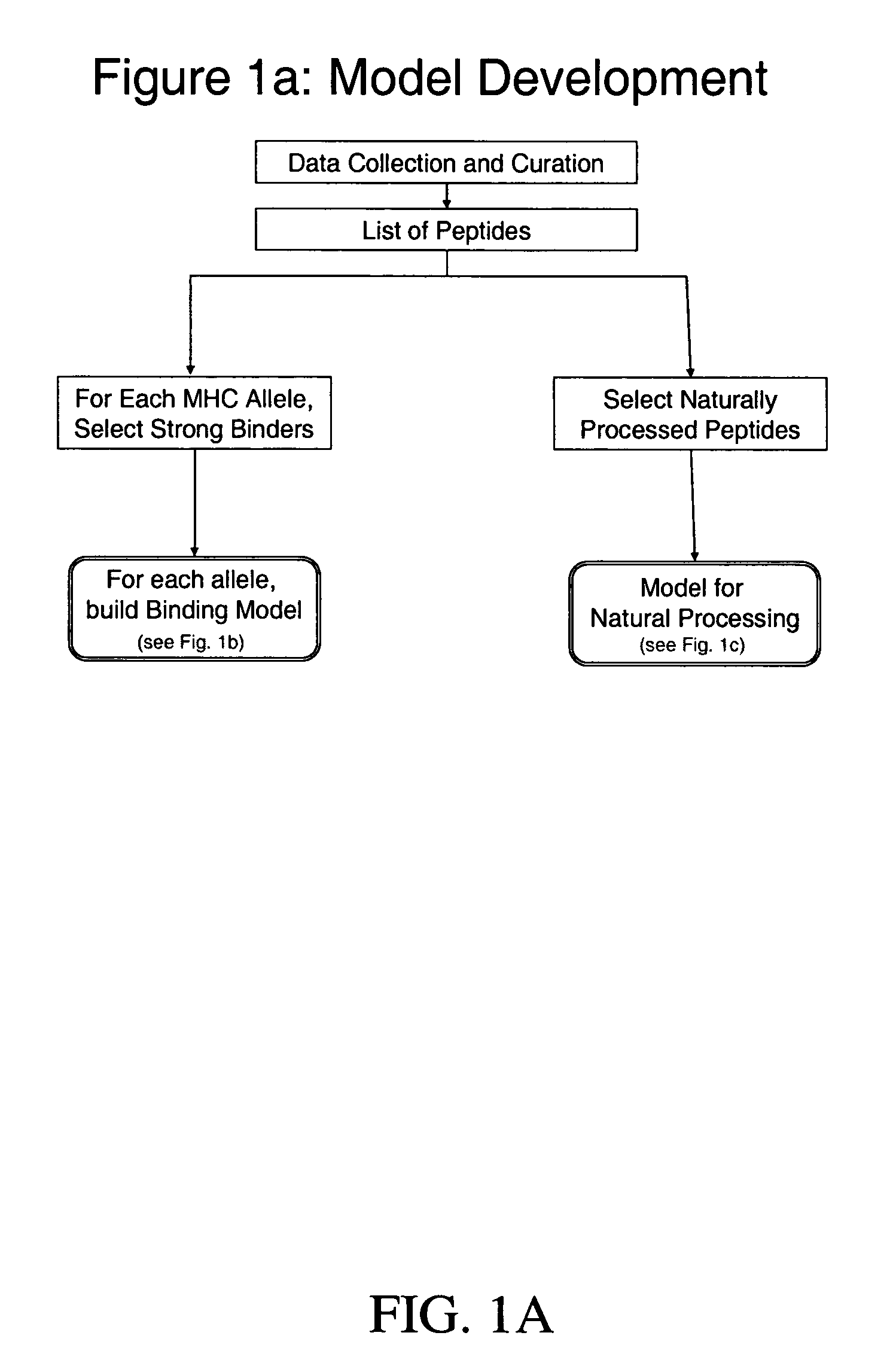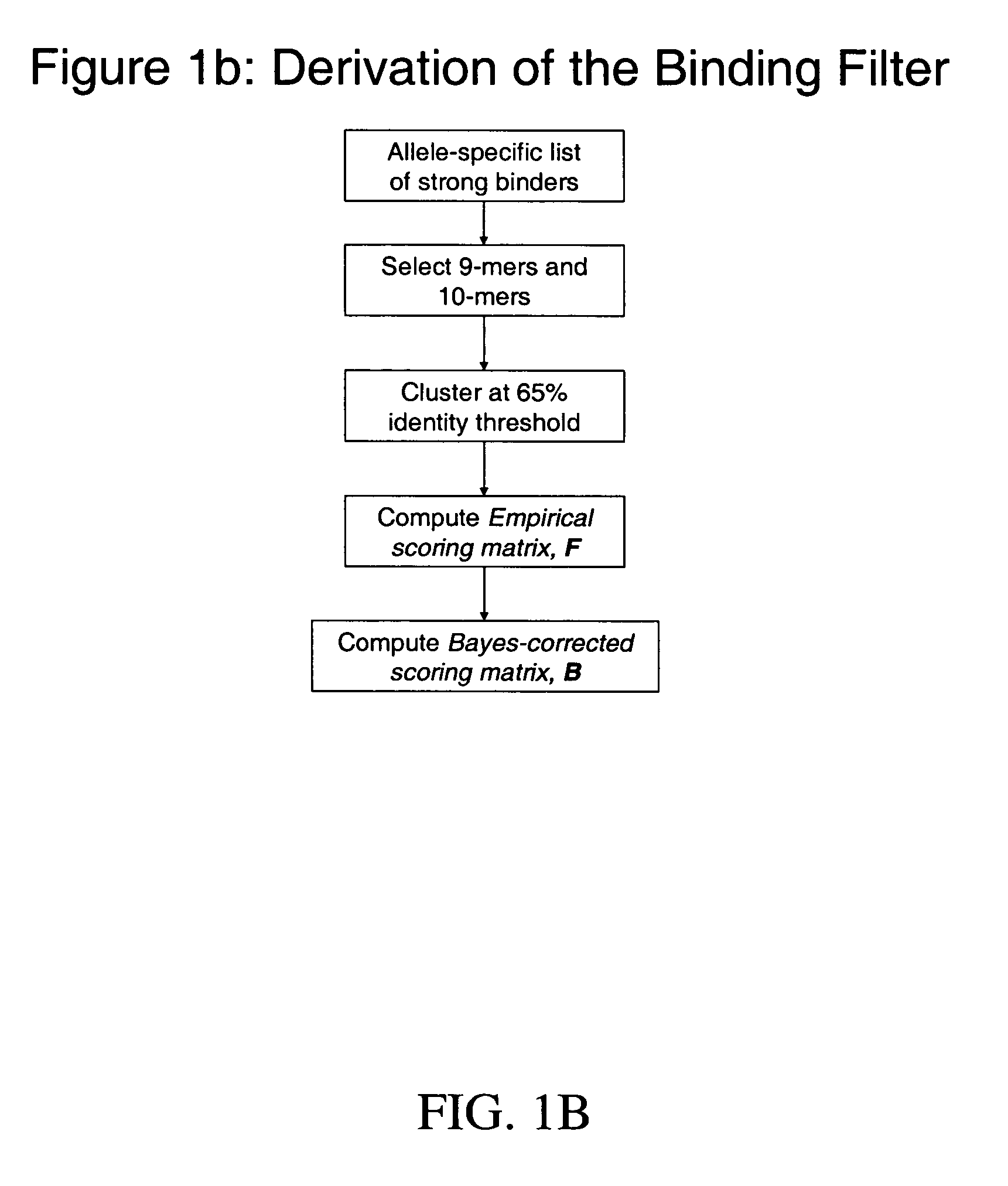System and method for automated selection of T-cell epitopes
a t-cell and epitope technology, applied in the field of bioinformatics, can solve the problems of low prediction accuracy of algorithms based on binding motifs, inability to explain peptides to bind to mhc molecules, and insufficient representation of sequence-based motifs, etc., to facilitate the design and development of improved immunodiagnostics and immunotherapeutics.
- Summary
- Abstract
- Description
- Claims
- Application Information
AI Technical Summary
Benefits of technology
Problems solved by technology
Method used
Image
Examples
example 1
Derivation of a Bayes-Corrected Scoring Matrix From Binding Data For the Murine Class I Molecule H-2Kd
[0179]This example illustrates how the methodology of the disclosed invention is used to derive a Bayes-corrected scoring matrix for the murine MHC Class I allele H-2Kd.
Step 1: Identify Strong Binders to H-2Kd
[0180]As of Jan. 30, 2005, 51 (fifty one) unique strong binders to H-2Kd were available from the aforementioned epitope databases (Jenpep, MHCBN, and FIMM). The peptides were obtained by selecting the option “Report strong binders to H-2Kd”, in each of the three databases. The identified peptides are listed in Table 1 (SEQ ID NOS.: 90-99 (8 mers), SEQ ID NOS.: 1-38 (9 and 10 mers), and SEQ ID NO.: 100 (11 mer), SEQ ID NO.: 101 (12 mer), and SEQ ID NO.: 102 (13 mer), respectively). Thirty eight (38) of the strong binders were 9-mers and 10-mers (SEQ ID NOS.: 1-38) and were retained for further analysis. The other 13 peptides reported in the databases were of lengths shorter th...
example 2
Use of a Bayes-corrected scoring matrix to Score Candidate Peptides
Step 1: Define Candidate Peptides of Target Protein
All possible 9mer and 10-mer frames (longer and shorter frames are not considered because most binders to Class I HLA molecules are of length 9 to 10) are determined in silico from the amino acid sequence of a target protein of interest.
Step 2: Score and Rank Candidate Peptides
Score each fragment using BSM as follows:
[0187]For each 9-mer a1, . . . a9, its score is obtained by simply adding the appropriate entries of the BSM:
[0188]S(a1⋯a9)=∑i=1…9B(ai,i)
For each 10-mer a1 . . . a10, its score is obtained by adding the scores of the 8 flanking amino acids and the average of the scores of the middle two positions:
[0189]S(a1⋯a10)=∑i=1…4B(ai,i)+∑i=7…10B(ai,i-1)+B(a5,5)+B(a6,5)2
The output of binding affinity filter is a list of 9-mer and 10-mer peptide fragments ranked by their scores.
example 3
T-cell Epitope Discovery in HCV-1
[0190]To validate the binding affinity filter described in this invention, we obtained 12 (twelve) published A2-restricted epitopes from the HCV virus from [P. Scognamiglio et al., J Immunol 1999, 162: 6681-6689]. The binding affinity of each epitope to the HLA-A2 was measured in a standard competitive inhibition assay against a radiolabeled probe peptide (see detailed protocol in the above-referenced paper). The epitopes (SEQ ID NOS.: 39-50, respectively) and their IC50 values are shown in Table 5.
[0191]
TABLE 5HLA-A2-restricted HCV epitopes fromP. Scognamiglio et.al., J Immunol. 1999, 162:6681–6689.Binding AffinityPeptide(IC50, nM)DLMGYIPLV80.0YLVAYQATV20.4ILAGYGAGV116.3YLLPRRGPRL125.0VLVGGVLAA185.2FLLLADARV18.2LLFNILGGWV4.2RLIVFPDLGV56.2HMWNFISGI15.2YLVTRHADV454.5LLFLLLADA217.4WMNRLIAFA122.0
Separately, we derived a Bayes-corrected scoring matrix for HLA-A2 from a set of 289 unique, naturally occurring strong binders, following the data extraction a...
PUM
| Property | Measurement | Unit |
|---|---|---|
| sequence identity threshold | aaaaa | aaaaa |
| dissociation rate | aaaaa | aaaaa |
| identity threshold | aaaaa | aaaaa |
Abstract
Description
Claims
Application Information
 Login to View More
Login to View More - R&D
- Intellectual Property
- Life Sciences
- Materials
- Tech Scout
- Unparalleled Data Quality
- Higher Quality Content
- 60% Fewer Hallucinations
Browse by: Latest US Patents, China's latest patents, Technical Efficacy Thesaurus, Application Domain, Technology Topic, Popular Technical Reports.
© 2025 PatSnap. All rights reserved.Legal|Privacy policy|Modern Slavery Act Transparency Statement|Sitemap|About US| Contact US: help@patsnap.com



